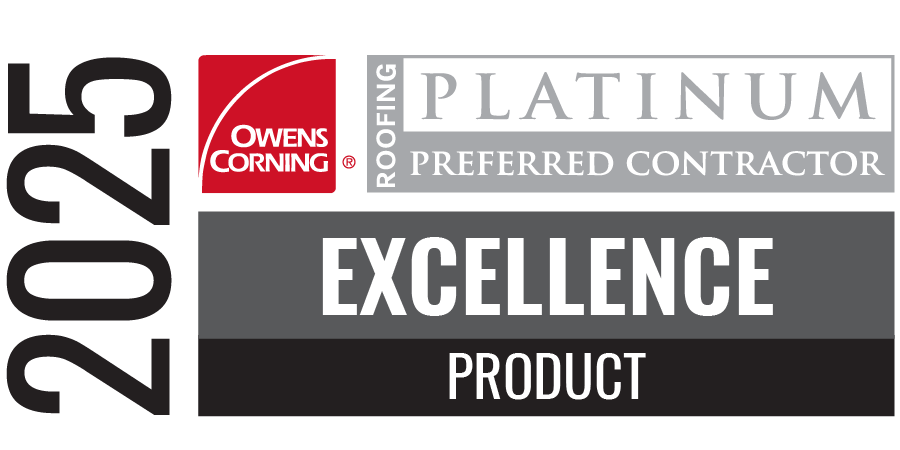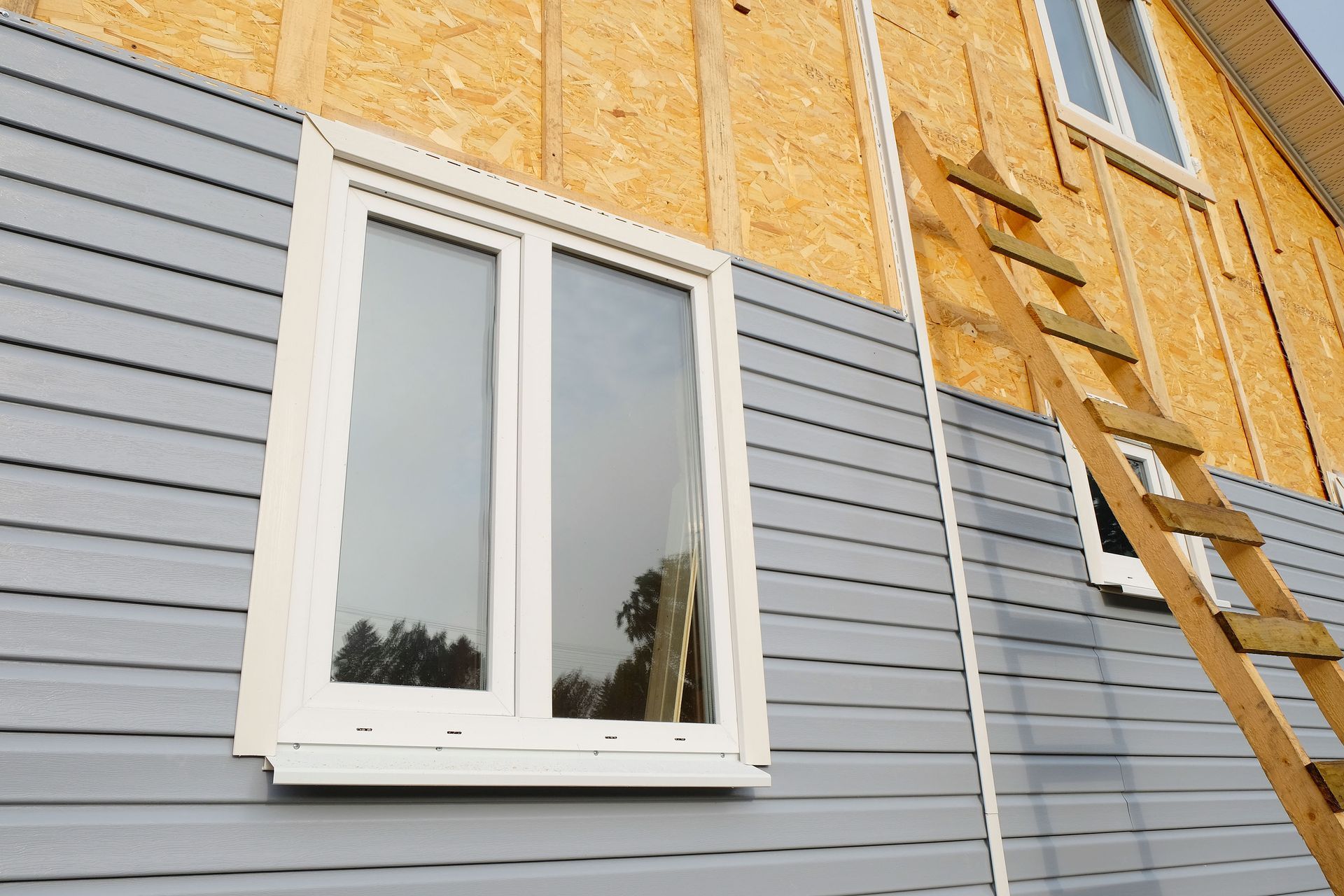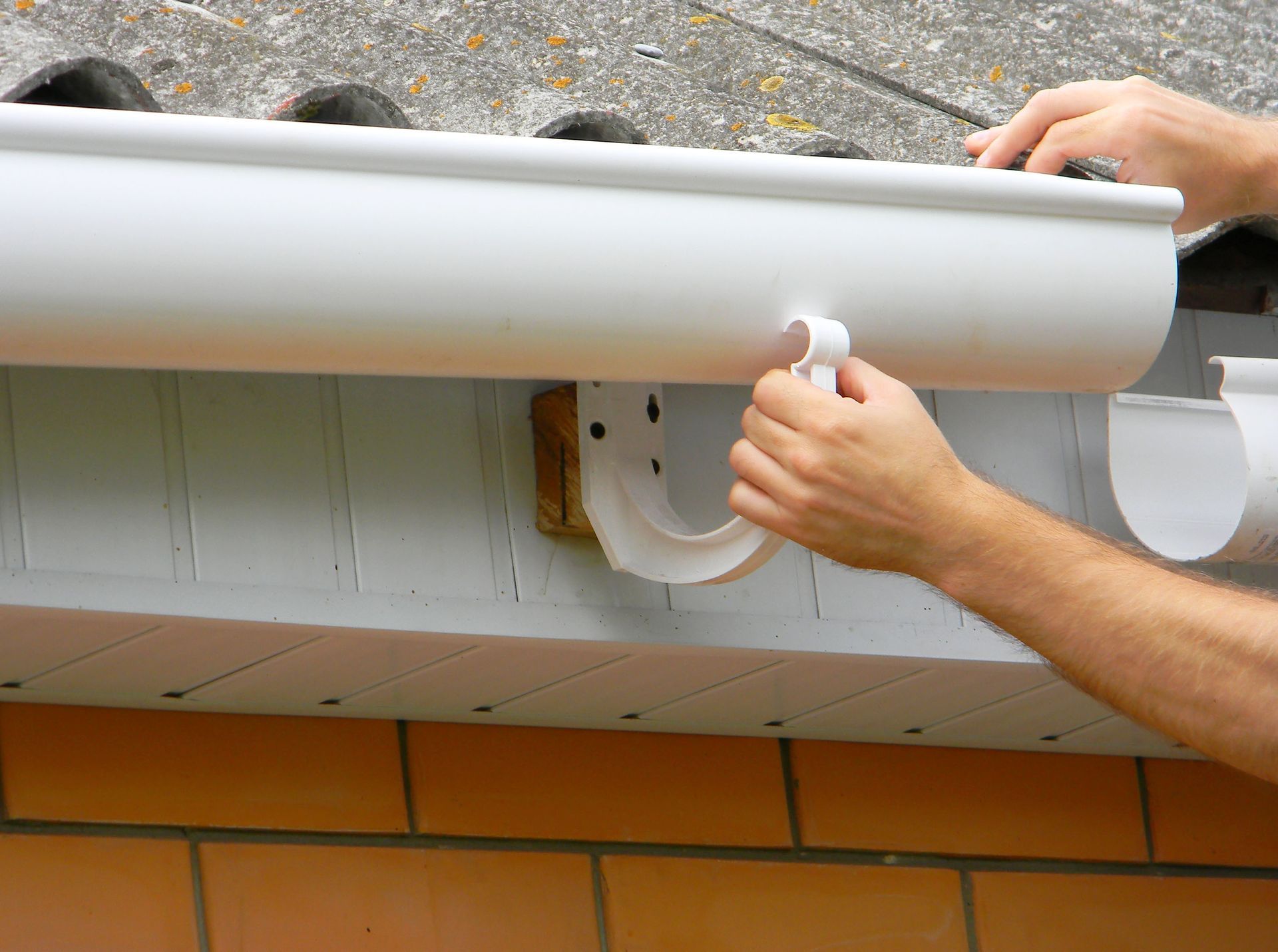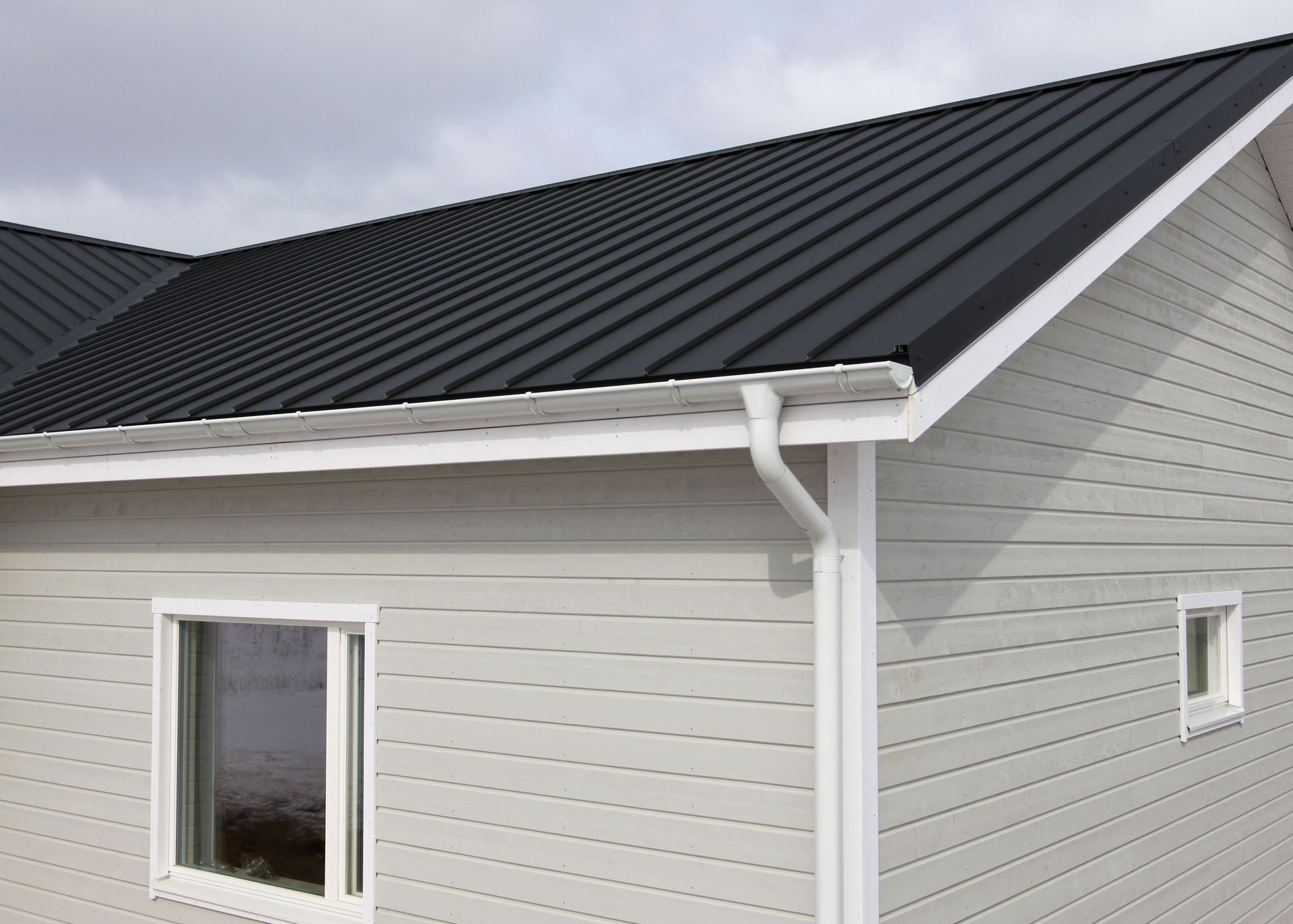New Window Installation: The Benefits of Upgrading to Energy-Efficient Windows
Are your energy bills making you sweat more than your hot, summer afternoons? It’s time to consider a new window installation upgrade! Energy-efficient windows are the unsung heroes of any well-insulated, comfortable, and wallet-friendly home. Not only do they give your house a facelift, but they also work tirelessly behind the scenes to keep your living space temperate and your electricity bills low. In this blog post, we’ll highlight the multiple ways in which installing new energy-efficient windows can benefit both your pocket and planet! So if slashing utility expenses, enhancing comfort in your home, or contributing positively to the environment are on top of your agenda, keep reading; because these aren’t just windows – they’re gateways to a smarter, greener future.
During a new window installation, you can expect a team of professionals to carefully remove your old windows and install new ones. The process typically includes measuring the windows, ordering the right size and type of window, removing the old window and properly disposing of it, and then installing and sealing the new window. The team will also perform any necessary touch-up work to ensure that everything looks clean and tidy. After installation, they will test the window function to confirm that it is working correctly. A professional new window installation service provider can provide you with an accurate timeline and details surrounding these steps before beginning your project.
Benefits of Energy-Efficient Windows
Upgrading to energy-efficient windows can bring a multitude of benefits to homeowners. Beyond the aesthetic enhancement they provide, these windows offer long-term advantages that can significantly impact both your comfort and finances. One of the key advantages is their ability to improve energy efficiency in your home, resulting in reduced utility bills and a smaller carbon footprint. Additionally, energy-efficient windows can enhance the overall comfort of your living space by providing better insulation against outside noise and maintaining consistent indoor temperatures.
Let’s explore these benefits in more detail, starting with the energy savings you can achieve by installing energy-efficient windows.
Energy Savings
One of the primary reasons homeowners choose to upgrade to energy-efficient windows is the potential for substantial energy savings. Unlike older, single-pane windows, energy-efficient windows are designed with advanced technologies that promote optimal insulation and minimize air leakage. This improved insulation helps to regulate indoor temperatures, preventing heat from escaping during colder months and minimizing heat gain from sunlight during warmer months.
For instance, imagine your home has single-pane windows that allow drafts during winter or let heat seep inside during summer. As a result, you might find yourself cranking up the heat or blasting the air conditioning system, leading to increased energy usage and higher utility bills. However, by replacing those outdated windows with energy-efficient ones, you can create a more thermally efficient barrier between your home and the outdoor environment.
Energy-saving features like Low-E glass coatings, multiple panes of glass separated by insulating gas fills (such as argon), and innovative frame materials work together synergistically to reduce thermal transfer. This means less reliance on heating or cooling systems and more consistent indoor comfort throughout the year.
Some may argue that the initial investment required for upgrading to energy-efficient windows outweighs the potential savings over time. While it is true that energy-efficient windows can have a higher upfront cost compared to standard windows, it’s important to consider the long-term benefits and return on investment. The energy savings achieved by reducing heating and cooling costs can add up significantly over time, potentially offsetting the initial expense of window replacement.
Furthermore, it is worth mentioning that upgrading to energy-efficient windows not only benefits homeowners financially but also contributes to environmental sustainability. By reducing energy consumption, these windows help lower greenhouse gas emissions associated with heating and cooling. This makes them an environmentally responsible choice, allowing you to reduce your carbon footprint and contribute positively to the planet’s well-being.
Comfort and Sound Insulation
When it comes to upgrading your windows, one of the first benefits that come to mind is improved comfort and sound insulation within your home. Think about those cold winter nights when you can feel a draft seeping through your windows, making the entire room chilly and uncomfortable. By investing in energy-efficient windows, you can significantly reduce drafts and maintain a consistent, comfortable temperature in your home year-round.
Not only do energy-efficient windows help keep your home warmer in the winter, but they also offer excellent insulation during the summer months. These windows are designed with advanced materials and technologies that prevent heat transfer, effectively minimizing heat gain from the outside. As a result, you can enjoy a cooler environment inside, reducing your reliance on air conditioning and ultimately saving on energy costs.
But the benefits extend beyond temperature control alone. Energy-efficient windows also provide remarkable sound insulation properties. If you live in a noisy neighborhood or near a bustling street, you know how disruptive external noises can be to your peace and quiet. However, with the installation of energy-efficient windows, you can greatly reduce noise infiltration into your home, creating a serene and tranquil living space.
Imagine living in an apartment next to a busy intersection where cars honk their horns day and night. The constant noise becomes unbearable and affects your ability to relax or focus on important tasks at home. But once these new windows are installed, the sounds of traffic fade away, replaced by peaceful silence. You can now fully enjoy the serenity of your home without any unwanted disturbances.
It’s important to note that not all energy-efficient windows are created equal in terms of sound insulation capabilities. Therefore, it’s crucial to work with an experienced window contractor who can guide you towards the most suitable options based on your specific needs. They will help you select double or even triple-pane windows with proper gas fills and insulated frames that offer superior soundproofing qualities.
By upgrading to energy-efficient windows, you’ll experience a remarkable improvement in the comfort and tranquility of your home. Say goodbye to drafts, temperature fluctuations, and intrusive external noises. Instead, embrace a cozy and peaceful environment that truly enhances your overall living experience.
Improved Home Value
Aside from the immediate benefits of comfort and sound insulation, upgrading to energy-efficient windows can also have a positive impact on the value of your home. In today’s real estate market where energy efficiency is highly valued by potential buyers, investing in these windows can be a wise decision if you’re looking to increase your property’s resale value.
Consider a scenario where you’re planning to sell your home. A buyer visiting your property will be impressed by the added value of energy-efficient windows. They will recognize that this upgrade not only provides cost-saving benefits but also aligns with their desire for an environmentally conscious and sustainable lifestyle. These buyers are willing to pay a premium for homes equipped with energy-efficient features, including windows.
Additionally, energy-efficient windows can boost your home’s curb appeal. The sleek design and clean lines of these modern windows can enhance the overall aesthetics of your property. Potential buyers will be attracted to the fresh appearance and perceive it as an indicator of good upkeep and modernization.
From an environmental standpoint, energy-efficient windows contribute to reducing carbon emissions by minimizing the need for excessive heating or cooling systems. This eco-friendly aspect will not only appeal to environmentally conscious buyers but also align with green standards set by local regulations and certifications.
It’s important to consult with a professional contractor who specializes in new window installations while considering upgrading to energy-efficient windows. They will ensure that the new window installation is done correctly, maximizing both the performance and aesthetic aspects. Additionally, they can provide information about available rebates or incentives related to energy-efficient upgrades in your area that could offset some upfront costs.
By investing in energy-efficient windows, you’re not only enhancing the comfort and value of your home but also contributing to a sustainable future. The combination of reduced energy consumption, increased property value, and improved aesthetics make it a worthwhile investment that brings both immediate and long-term benefits.
- A 2016 report from the Department of Energy showed that heat gain and loss through windows are responsible for around 25%-30% of residential heating and cooling energy use in the U.S., demonstrating importance of proper window installation.
- A 2017 survey conducted by HomeAdvisor revealed the average homeowner spends between $3,000-$10,000 on replacing windows which emphasizes the prevalent need for this service.
- Recent records show that in spite of COVID-19 induced slowdowns, the global market for doors and windows is projected to reach US$210 billion by 2024, underlining the steady demand for window installation services.
Process of Upgrading to New, Energy-Efficient Windows
Upgrading to new, energy-efficient windows can significantly enhance the comfort, energy efficiency, and overall value of your home. However, it’s essential to understand the process involved in this endeavor to ensure a seamless and successful installation. Let’s dive into the key steps of upgrading to energy-efficient windows.
Firstly, assess your needs and priorities . Consider factors such as style, material, and energy efficiency ratings when selecting the right windows for your home. Assess which rooms require replacement and determine if any additional modifications are necessary during the installation process.
Next, measurements are crucial. Proper measurements ensure that the new windows fit snugly into their designated spaces without any gaps or drafts. Take precise measurements of the window openings, considering both width and height. Seek professional guidance if you’re unsure about this step.
Once you have chosen your windows and completed accurate measurements, remove the existing windows carefully. This step requires careful attention to prevent any damage to the surrounding frame or interior walls. Take caution when removing old panes of glass or sashes, using proper safety equipment.
After removing the old windows, it’s time for preparation work. Clean the window frames thoroughly, removing any debris or dirt that may hinder proper insulation or adhesion of the new windows. Inspect the window openings for any signs of damage or decay that may need repairs.
Now comes the exciting part: installing the new windows ! Follow manufacturer instructions and recommended installation methods to ensure a proper fit and seal. Apply proper insulation materials and use suitable fasteners to secure the new windows firmly in place.
Once the installation is complete, test for proper functionality . Open and close each window several times to ensure smooth operation without any sticking or misalignment issues. Check for a tight seal by running your hand along the edges to feel for any drafts. Address any issues promptly to optimize the energy efficiency of your new windows.
Lastly, consider professional finishing touches . This could include adding weatherstripping or caulking around the edges of the window frames to further enhance insulation and reduce air leaks. Properly sealing and insulating the new windows will help maximize energy savings and increase comfort in your home.
Hiring a Professional vs DIY
When it comes to upgrading your windows to energy-efficient models, you may wonder whether it’s more beneficial to hire a professional or tackle the installation as a DIY project. While both options have their advantages and considerations, it’s crucial to weigh them before making a decision that best fits your needs.
Hiring a professional brings expertise, experience, and peace of mind. Professional installers have the necessary skills and knowledge to handle window installations efficiently and accurately. They can ensure that each step is carried out correctly and address any potential challenges along the way. Additionally, professionals often offer warranties on their workmanship, providing an extra layer of protection.
On the other hand, DIY installation can be a rewarding and cost-effective option for those with appropriate skills and knowledge. It allows for greater flexibility in terms of timing and cost management. However, undertaking this task without proper experience or equipment can lead to mistakes that compromise the performance and longevity of your new windows.
Consider your own capabilities, available time, budget constraints, and comfort level with home improvement projects when deciding between hiring a professional or opting for a DIY approach. Complex installations or unique architectural features might require professional assistance for optimal results. Additionally, local building codes or regulations may dictate whether certain window installations require professional oversight.
Ultimately, prioritize the safety, quality, and long-term value of your investment when making this decision. Weighing the pros and cons while keeping your specific circumstances in mind will help determine which route is best suited for you.
Measuring for New Window Installation
Before diving into the exciting world of new window installation, it’s essential to take accurate measurements. Proper measurement is crucial because it ensures that your new windows fit snugly and securely into the existing openings, maximizing energy efficiency and preventing drafts.
To get started, you’ll need a few tools, including a tape measure, pencil, and paper. Begin by measuring the width of the window opening from the inside edge of one side jamb to the inside edge of the other side jamb. Take measurements at the top, middle, and bottom to account for any variations in size.
Next, measure the height of the window opening from the sill to the head jamb in three different locations: left side, middle, and right side. It’s important to note that older homes may have slightly irregular window openings due to settling or previous modifications, so measuring multiple points will help ensure accuracy.
Let’s say you’re measuring a window opening in your living room. You measure 36 inches across at the top, 35.5 inches at the middle, and 36.25 inches at the bottom for the width. For height, you measure 48 inches on the left side, 47.75 inches in the middle, and 48.5 inches on the right side.
Once you have these measurements written down, determine if they fall within industry-standard window sizes or if custom windows will be required. If your measurements align with standard sizes, you can easily find off-the-shelf windows that will fit your needs. However, if your measurements are outside of those dimensions or if you want a specific style or design not readily available in standard options, custom windows can be fabricated to your exact specifications.
It’s worth noting that precise measurements are crucial when ordering custom windows since incorrect sizing could result in delays and additional costs. Many reputable window dealers or manufacturers offer guidance on how to measure correctly and may even send their experts to take the measurements for you, ensuring a perfect fit.
Now that you have the measurements for your new windows, it’s time to explore the various types and sizes available to suit your specific needs and preferences.
Choosing the Right Type and Size
Window replacement offers an opportunity to not only enhance the aesthetics of your home but also improve energy efficiency and functionality. Selecting the right type and size of windows is crucial for achieving these goals.
When choosing window types, consider factors such as weather conditions, architectural style, ventilation requirements, and personal preferences. Common window types include double-hung windows, casement windows, sliding windows, awning windows, and picture windows. Each type has its own unique features and benefits.
For example, if you live in an area with a mild climate and desire maximum airflow, casement windows that swing open like doors might be a suitable choice. On the other hand, if you want unobstructed views and ample natural light, large picture windows could be the perfect option.
Additionally, while standard window sizes exist, custom-sized windows are also available to meet specific requirements. Custom-sized windows can be particularly useful if you’re working with non-standard window openings or seeking a unique design element for your home.
It’s essential to strike a balance between aesthetics and practicality when deciding on window size. Larger windows can create a dramatic effect by bringing in more natural light and offering expansive views. However, they may not be suitable for every room or provide adequate insulation in certain climates. Consider factors such as room dimensions, energy efficiency ratings (U-factor and Solar Heat Gain Coefficient), privacy needs, and any local building codes or regulations.
While larger windows can be visually appealing in living rooms or kitchens where abundant natural light is desired, smaller windows might be preferable in bedrooms or bathrooms to prioritize privacy without compromising ventilation.
Armed with the knowledge of how to measure and choose the right type and size of windows, you’re now ready to explore the expense factors associated with window replacement.
Expense Factors in Window Replacement
When it comes to considering window replacement, one of the primary concerns for homeowners is the cost involved. Understanding the expense factors associated with window replacement can help you make an informed decision and plan your budget accordingly.
First and foremost, the size and number of windows that need to be replaced play a significant role in determining the overall cost. Larger or more numerous windows will generally result in a higher price tag, as they require more materials and labor for installation.
The type of window you choose is another crucial factor that affects the expense. Different window styles, such as double-hung, casement, or picture windows, have varying price points based on their complexity and design features.
Let’s say you’re looking to replace five windows in your home with energy-efficient options. Depending on the size and style you select, each window could range from $500 to $1,000 for both materials and installation. This means that your total expense could fall between $2,500 and $5,000.
In addition to these factors, the quality of materials used also influences the cost. Opting for high-quality windows made with durable materials may come with a higher upfront cost but can provide long-term savings through enhanced energy efficiency and reduced maintenance needs.
Installation costs should not be overlooked either. Hiring a professional contractor ensures proper installation, but this service comes at a price. It’s crucial to obtain multiple quotes from reputable contractors to compare prices while considering their expertise and track record.
It’s worth mentioning that while window replacement might seem like a significant investment initially, its benefits can outweigh the expenses over time. Energy-efficient windows can lead to substantial savings on heating and cooling bills, increased comfort by reducing drafts and noise intrusion, improved curb appeal, and even potential resale value gains for your home.
Now that we have explored the expense factors involved in window replacement let’s move on to the next crucial aspect – selecting a qualified contractor to carry out the installation.
Expert Guidance: Selecting a Qualified Contractor
While it may be tempting to consider new window installation as a DIY project, hiring a qualified contractor is highly recommended. Proper new window installation plays a vital role in ensuring the functionality and longevity of your new windows. So how do you go about selecting the right contractor?
First and foremost, research is paramount. Look for contractors in your local area who specialize in window installation and have a solid reputation for quality workmanship. Check online reviews and testimonials from previous customers to get a sense of their expertise and customer satisfaction levels.
Keep in mind that while cost is an essential factor, it should not be the sole determining factor. The lowest bid may not necessarily guarantee the best quality work or reliable service. It’s important to strike a balance between affordability and quality.
Next, ensure that the contractor you choose is properly licensed, bonded, and insured. This step protects both you as the homeowner and the contractor in case of any accidents or damages during the installation process.
For instance, imagine hiring an unlicensed contractor who accidentally damages your property during new window installation. Without proper insurance coverage, you may end up being liable for those damages, resulting in unexpected expenses.
An experienced contractor will also provide warranty coverage for their workmanship and potentially even offer warranties on the windows themselves. This can provide added peace of mind, knowing that you are protected against any unforeseen issues that may arise after installation.
Lastly, don’t hesitate to ask for references from past clients or request to see examples of their completed projects. This allows you to gauge the quality of their work firsthand and ensure that they can meet your specific needs and expectations.
By taking these steps and investing time in finding a qualified contractor, you can confidently move forward with your new window installation project, knowing that it will be executed professionally and to your satisfaction.
The post New Window Installation: The Benefits of Upgrading to Energy-Efficient Windows appeared first on Ireland Contracting.







Share On: